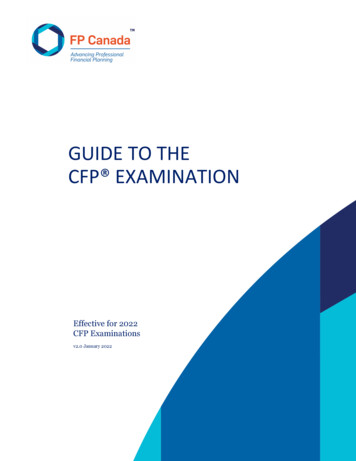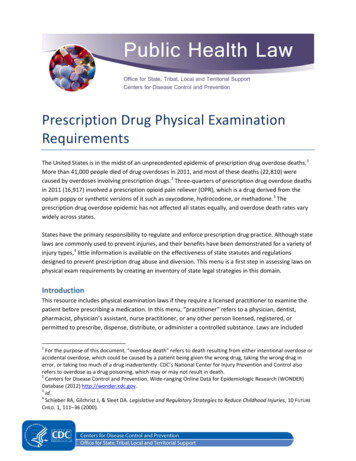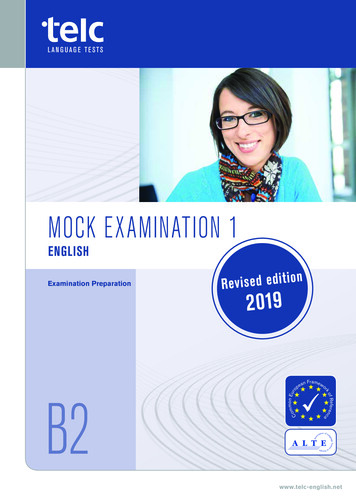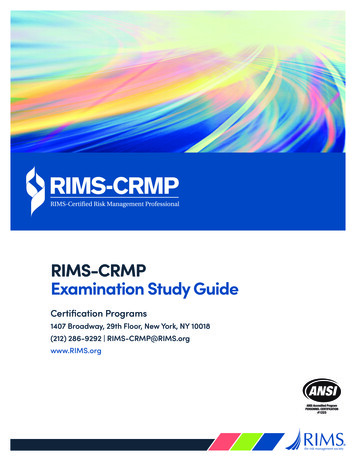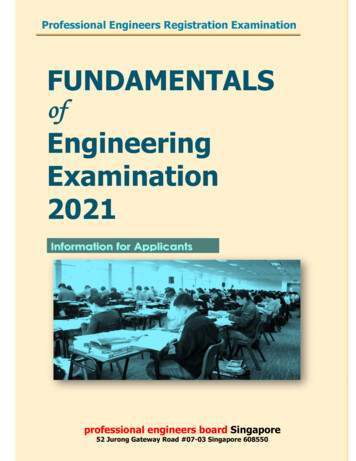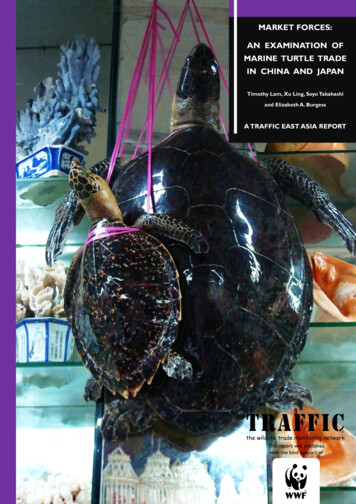
Transcription
MARKET FORCES:EAN EXAMINATION OFMARINE TURTLE TRADEIN CHINA AND JAPANTimothy Lam, Xu Ling, Soyo Takahashiand Elizabeth A. BurgessA TRAFFIC EAST ASIA REPORTThis report was publishedwith the kind support of
Published by TRAFFIC East Asia,Hong Kong SAR, China 2012 TRAFFIC East AsiaAll rights reserved.All material appearing in this publication is copyrighted and maybe reproduced with permission. Any reproduction in full or inpart of this publication must credit TRAFFIC East Asia as thecopyright owner.The views of the authors expressed in this publication do notnecessarily reflect those of the TRAFFIC Network, WWF orIUCN.The designations of geographical entities in this publication, andthe presentation of the material, do not imply the expression ofany opinion whatsoever on the part of TRAFFIC or its supportingorganizations concerning the legal status of any country, territory,or area, or its authorities, or concerning the delimitation of itsfrontiers or boundaries.The TRAFFIC symbol copyright and Registered Trademarkownership is held by WWF. TRAFFIC is a joint programme ofWWF and IUCN.Suggested citation: Lam, T., Xu Ling, Takahashi, S., andBurgess, E.A. (2011). Market Forces: An Examination of MarineTurtle Trade in China and Japan. TRAFFIC East Asia, HongKong.Layout by Catalyze CommunicationsISBN 962-86197-8-0Cover: Green and Hawksbill Turtles on sale in Qingdao,Shandong Province, ChinaPhotograph credit: Xu Ling/TRAFFIC
MARKET FORCES:AN EXAMINATION OF MARINE TURTLETRADE IN CHINA AND JAPANCredit : Xu Ling / TRAFFICTimothy Lam, Xu Ling, Soyo Takahashi and ElizabethA. BurgessHawksbill Turtle shell jewellery on sale in Sanya, Hainan Province
CONTENTSAcknowledgementsiiiExecutive summaryivIntroduction1Legislation review7Harvesting controls for marine turtles7Domestic trade controls for marine turtles8Methods10Results13Reported seizures in East Asia13Market Survey Findings18Mainland China18Source markets22Regional cities25Major cities27Traditional Chinese Medicine markets2829JapanTokyo29Nagasaki30Okinawa32Japan Bekko Association33Ranching of Hawksbill 2References45iiMARKET FORCES: AN EXAMINATION OF MARINE TURTLE TRADE IN CHINA AND JAPAN
ACKNOWLEDGEMENTSThis report would not have been possible without the support of WWF’s Coral Triangle Programme, particularlyDr Lida Pet-Soede. Timothy Lam, formerly of TRAFFIC East Asia, is thanked for his co-ordination of researchinto the trade of marine turtles in China and Japan, led by Xu Ling and Soyo Takahashi, respectively.Inputs from Joyce Wu, Sean Lam and Professor Xu Hongfa were also extremely helpful in compiling theinformation. Collaborative thanks go out to Steven Broad, James Compton, Kevin Hiew, Ken Kassem, NoorainieAwang Anak, Kanitha Krishnasamy and Irene Kelly for their peer review comments and feedback which madethis report stronger. Julie Gray, Richard Thomas and Marc-Antoine Dunais are thanked for their efforts inpreparing the report for publication.MARKET FORCES: AN EXAMINATION OF MARINE TURTLE TRADE IN CHINA AND JAPANiii
EXECUTIVE SUMMARYMarine turtle shell remains a much sought-after commodity, as well as turtle meat and whole specimens, and as aresult, Hawksbill Turtle and other marine turtle populations are under heavy exploitation pressure. Evidencefrom current seizure records and market surveys highlight a consistent illegal trade route to mainland China fromthe Coral Triangle region of South-east Asia (mainly the Philippines, Malaysia, and Indonesia). This reportanalyses 128 seizures involving the East Asian countries between 2000 and 2008, with a trade volume of over9180 marine turtle products including whole specimens (2062 turtles), crafted products (n 6161 pieces) and rawshell (789 scutes and 919 kg).The demand for marine turtles and their shell products in Hainan Province and the rest of mainland China is of anincreasing magnitude. Mainland China is undoubtedly a major market for illegal trade with 150 whole specimensand 7217 processed shell products observed for sale in 117 shops with a value of nearly half a million USD.Traditional Chinese Medicine markets were found to be selling 159 kg of shell. The open sale of marine turtleproducts undoubtedly indicates the demand for marine turtles in China, and seizure records are evidence of theheavy exploitation that is occurring to meet this demand. In the period of this study, 2017 individual turtles wereconfiscated in seizures implicating mainland China. This equates to 98% of the whole specimen trade in theregion. Taiwan appears to be a significant market for processed shell items with a single seizure confiscating6120 pieces. Seizures in Hong Kong were mostly confiscated shell scutes hidden in cargo consignments, with thelargest seizure involving 556 kg.Available information shows that the number of seizures in the region has been increasing, with 2007 and 2008recording the highest number of apprehensions. Authorities in China have seized 539 whole specimens, but thevolume of whole marine turtles confiscated in international seizures which implicated Chinese nationals was1478 turtles. Most local fishermen interviewed considered marine turtles to be a valuable by-catch species.However, there are indications that some fishing vessels from China are directly targeting marine turtles. Therevenues generated by this commerce are sufficient to encourage Chinese nationals to venture into foreignterritorial waters overriding concerns of enforcement and penalties. The largest seizure reported during the studyperiod involved 387 dead turtles aboard a Chinese fishing vessel in the Derawan Archipelago in East Kalimantan(Indonesia). It is presumed that poachers are targeting source locations widely distributed across the Sulu andCelebes Sea (Sulu-Sulawesi Marine Ecoregion). With current population declines, it appears that turtle poachersare now travelling to more distant fishing areas to fill their catch, and potentially remaining in foreign waterssurrounding remote archipelagos to fill their cargo.ivMARKET FORCES: AN EXAMINATION OF MARINE TURTLE TRADE IN CHINA AND JAPAN
In Japanese markets, the demand for highly decorative bekko pieces skilfully manufactured from Hawksbillmarine turtle shell remains persistent. In 58 shops visited in Tokyo, Nagasaki and Okinawa, we found 11 080bekko items for sale. From reports of seizures entering the country, it was apparent that import shipments ofmarine turtle into Japan were only the raw scutes, which had been removed from the turtle carapace. Allconsignments of marine turtle shell were exported to Japan by mail or air. The largest seizures involved 89 kg and400 pieces of shell product imported from Indonesia. However, seized scute shipments were generally small andpotentially easily concealed, hence, exporters smuggled packages by mail and air into Japan. After its removalfrom the turtle, the raw scute, which is the principal export product in this trade, can be stored dry without specialtreatment for years. It is therefore probable that the true extent of the marine turtle trade in Japan is more easilyconcealed because the trade was only in scutes and the number of marine turtles harvested is difficult to estimate.This trade in scutes contrasts greatly with that of the whole specimens recorded in China, which allows a directcount of the number of animals involved in the marine turtle trade.Poaching pressure on marine turtle populations can be attributed to commercial demand at a regional (Asia) andglobal scale, inadequate enforcement of laws, but also the socio-economic needs of both the source and consumercountries. There are significant contrasts between the markets of China and Japan, based on consumer demand,commodity value, trade volume and even product-type. However, the source of marine turtles was similar inChina and Japan with nationals from both countries involved in seizures of marine turtles sourced from countriesin South-east Asia. Poaching by foreign vessels in the territorial waters of neighbouring countries is a seriousconservation problem. Equally, profit-seeking subsistence fishermen are often exploited by their owncountrymen. Undoubtedly, the scale of trade across China and the motivation of Chinese nationals to harvest inforeign waters clearly implicate China as a major player in this global trade. This study aimed to compileinformation comprehensively from seizure records and market surveys in China and Japan. This report drawsattention to the Coral Triangle as being the target region for poaching marine turtles, and the scale of trade placessignificant pressure on marine turtle populations in the Sulu-Sulawesi Marine Ecoregion.Recommendations resulting from this study to mitigate the current trend in marine turtle trade are as follows: Legal protection of marine turtles in China should be supported by strengthened enforcement actions byrelevant government authorities, such as the Fishery Department of China’s Agriculture Administration.Actions include confronting the issue of domestic trade and increasing efforts to detect and preventfurther illegal harvesting by Chinese fishermen in foreign waters. Deliberate confiscation anddestruction of all marine turtle products that remain for sale in all stores and warehouses, in accordancewith the law, would also help deter further offences.MARKET FORCES: AN EXAMINATION OF MARINE TURTLE TRADE IN CHINA AND JAPANv
Strengthened enforcement in China should be supported by an awareness campaign targeting localpublic, tourists, vendors and fishers regarding the illegal sale and/or capture of marine turtles, and toraise awareness of existing legislation and illegal trade issues – particularly focused in Hainan Province.There is a need to educate and mobilize Hainan residents, and the burgeoning numbers of tourists, tosupport better control of marine turtle trade. Awareness campaigns and interactive dialogue betweenstakeholders, government and non-government organizations will help change perceptions and developunderstanding of the need to protect marine turtles and prevent illegal trade. Multi-lateral, regional, inter-regional commitments should be strengthened across internationalboundaries and in territorial waters of source countries to unify conservation efforts on a global scale.Both China and Japan are recognized range States for marine turtles, but are not yet signatories to theMemorandum of Understanding on the conservation and Management of Marine Turtles and theirHabitats of the Indian Ocean and South-East Asia (IOSEA). It is recommended that China and Japanbecome signatories to the IOSEA Marine Turtle international agreement in order to further supportinternational actions for marine turtle conservation, including the curbing of illegal international trade.Regional efforts should build on the current Sulu-Sulawesi Marine Ecoregion Tri-national Sea TurtleConservation Programme, and the inter-governmental Coral Triangle Initiative. Systematic exchange of actionable intelligence information regarding illegal harvest and trade of marineturtles and their products should be promoted between countries in South-east and East Asia withmulti-national and trans-regional co-operation required. It is recommended that illegal harvest and tradeof marine turtle products be prioritized for intelligence exchange and further law enforcement action bythe 10 member countries of ASEAN Wildlife Enforcement Network, with links to existing markets in theASEAN 3 grouping (China, Japan, South Korea). Assessments should be made of the socio-economic status and economic incentives that drive the directand opportunistic take of marine turtles in China. Socio-economic studies should be conducted in fishingcommunities and other local businesses involved in the harvesting, processing or trade of marine turtleproducts to determine the level and nature of dependence on marine turtle products – particularly inHainan Province. Solutions should consider non-consumptive uses for marine turtles in the region andcreate tangible benefits to the communities that interact with marine turtles. For example, enhancingtourism initiatives in Hainan would create alternative job opportunities and revenue, and engenderstronger commitment for conservation efforts.viMARKET FORCES: AN EXAMINATION OF MARINE TURTLE TRADE IN CHINA AND JAPAN
Relevant government authorities in China should focus capacity building at regional and national levels tofurther educate relevant law enforcement agencies about marine turtle conservation including enforcementactivities. The Fishery Department of Agriculture Administration and relevant partners, includingnon-government organizations, should co-operate with law enforcement agencies in the training of fieldstaff on the implementation and enforcement of CITES and relevant national law. Government and non-government organization partners should continue monitoring the status of marineturtle product availability and trade patterns in China, in order to measure the success of enforcementefforts and to keep abreast of changing market trends, trade routes and other relevant information.Regional capacity building in China should be promoted through strengthening research and advocacyskills, and involving the institutional capacity of participating academic and research organizations. Thecurrent population status of all marine turtle species in the wild should continue to be monitored, andlocal individuals and organizations should be trained to carry out such monitoring projects. Such actionswill highlight and prioritize issues requiring international co-operation and management. Advocacy targeted at the decline of bekko trade is needed in Japan. Strategies should involve relevantgovernment agencies, such as the Ministry of Agriculture, Forestry and Fisheries, and include raisingawareness through interventions with key stakeholders and the public, and the Japan Bekko Association.Any existing or proposed Hawksbill Turtle ranching projects in Japan should be monitored closely andevaluated for potential impact on marine turtle trade dynamics and Hawksbill Turtle conservation. There is current knowledge gap regarding the availability of marine turtle products in domestic trade ofsome countries and territories in East Asia, particularly Taiwan and South Korea. Both have beenrevealed as significant markets in the marine turtle trade in the past, and should be considered a priorityto evaluate further the status of current trade.MARKET FORCES: AN EXAMINATION OF MARINE TURTLE TRADE IN CHINA AND JAPANvii
INTRODUCTIONCredit : Jeanne A. Mortimer / WWF-CanonMarine turtles have been exploited extensively fortheir mottled, translucent scutes which cover thecarapaceandplastronoftheturtleshell(Groombridge and Luxmoore, 1989; van Dijk andShepherd, 2004). These keratinous scutes have beencoveted for centuries as raw material for artefactmanufacture (Aikin, 1840). Known as tortoiseshellor bekko in the antiquities and wildlife trade, marineturtle scutes are commonly used to make jewellery,combs, hand-held fans, buttons, spectacle frames,furniture embellishments and numerous curios(Limpus and Miller, 1990; Márquez 1990; van Dijkand Shepherd, 2004). The speckled amber andbrown appearance of these artefacts is highlydistinctive and visually appealing, which has led toa market demand for marine turtle shell (Canin,1991). Despite international protection, marineturtles are still being harvested and exploited fortortoiseshell scutes as well as for their meat(Lilley, 2009; Dethmers and Baxter, 2011) andFinished turtle products at a small bekko factory inNagasaki, Japan.their eggs (Anon, 2009a). Therefore, reports ofthe commerical sale of marine turtles and theirparts are critical to wildlife law enforcement efforts.All marine turtle species (Families Dermochelyidae and Cheloniidae) are listed in the Appendices of theConvention on International Trade in Endangered Species of Wild Fauna and Flora (CITES). CITES came intoforce in 1975, and by 1977, it prohibited international trade of marine turtles and their products among itssignatory nations. At that time, at least 45 countries were involved in exporting and importing raw tortoiseshell.Today, all seven marine turtle species are listed in Appendix I of CITES: Leatherback Turtle Dermochelys1MARKET FORCES – AN EXAMINATION OF MARINE TURTLE TRADE IN CHINA AND JAPAN
coriacea, Green Turtle Chelonia mydas, Hawksbill Turtle Eretmochelys imbricata, Loggerhead Turtle Carettacaretta, Olive Ridley Turtle Lepidochelys olivacea, Kemp’s Ridley Turtle Lepidochelys kempii and FlatbackTurtle Natator depressus. The Leatherback Turtle (Family Dermochelyidae) lacks carapacial scutes and is notexploited for the tortoiseshell trade. The Flatback and Kemp’s Ridley Turtle are very rare, and are not known tobe used in the tortoiseshell trade (van Dijk and Shepherd, 2004). The most extensively used species in thetortoiseshell trade is the Hawksbill Turtle, though the Green and Loggerhead Turtle may also be exploited forLarge numbers of Hawksbill Turtles have beenharvested around the world (Mack, 1983;Groombridge and Luxmoore, 1989; Milliken andTokunaga, 1989; Duc and Broad, 1995; van Dijkand Shepherd, 2004; Stiles, 2008; Kinch andBurgess, 2009). The tortoiseshell scutes ofHawksbill Turtles are more distinctly patterned thanthose of the other marine turtle species – thoughpigmentation in scutes can be highly variable(Frazier, 1971; Kobayashi, 2001; van Dijk andShepherd, 2004). Hawksbill scutes are typicallyBekko factory worker operating on the ventral part ofa turtle shell (plastron) to make products. Nagasaki,Japan.thicker than those of other marine turtle speciesand are more conducive to use as a raw material source. Items are fashioned by bonding, shaping, and carving thescutes to create pieces of jewellery, decorative ornaments, and tools (Groombridge and Luxmoore, 1989; Canin,1991; Hainshwang and Leggio, 2006). The harvest of marine turtles to obtain this raw material is recognized as akey threat to their conservation in the wild, and has greatly contributed to their global status of Hawksbill Turtlesas Critically Endangered (IUCN, 2011).Tortoiseshell, known in Japanese as bekko, has been a precious commodity in global trade since ancient times.The working of tortoiseshell into ornaments appears to have first begun in China over a thousand years ago, andwas introduced to Japan during feudal times (the Edo Period, about 300 years ago) (van Dijk and Shepherd,2004). Since the 1700s, the Japanese have been renowned as the world’s best bekko artisans. Historically, bothChina and Japan have figured prominently in the trade of this commodity throughout the world. However, muchof the extensive decline in Hawksbill Turtle populations has occurred in the 20th century, driven by intenseMARKET FORCES – AN EXAMINATION OF MARINE TURTLE TRADE IN CHINA AND JAPAN2Credit : Jeanne A. Mortimer / WWF-Canontheir scutes (van Dijk and Shepherd, 2004).
international trade in bekko to supply luxury and craft markets. Although the volume of global trade is consideredto have decreased after decades of conservation, it remains an active threat.When CITES enforcement over marine turtle trade came into effect (1977), trading did not effectively cease forseveral decades because Japan took a reservation (legal objection) to the listing when it acceded to CITES in1980. By 1994, international pressure forced Japan to end its marine turtle product imports by withdrawing itsreservation to the Appendix I-listing of the Hawksbill Turtle. However, Japan has supported several unsuccessfulefforts to reopen the international marine turtle trade (CITES Prop. 10.60 in 1997, Prop. 11.40 and 11.41 in 1999,Prop. 12.30 in 2002). These Proposals by Cuba would have transferred Hawksbill Turtles from CITES AppendixI to II in order to allow for limited and highly regulated trade between Cuba and Japan only. The Cuban proposalsfailed to obtain the required two-thirds majority support by CITES Parties in 1997, and again in 1999 (only Prop.11.41 was voted on as Cuba withdrew Prop. 11.40). In 2002, Cuba withdrew the CITES Proposal (Prop. 12.30) totransfer stockpiled shell from Cuba to Japan, three months before the CITES 12th Conference of the Parties(Santiago, Chile). The standing bekko stockpile in Japan should now be exhausted, but the industry remains intactwith a continued demand for marine turtle shell items (TRAFFIC, 2004; van Dijk and Shepherd, 2004; Stiles,2008). In the years preceding the 1994 ban on bekko imports, a number of attempts to smuggle bekko into Japanwere intercepted – ranging from a container shipment carrying over three tonnes of bekko from Indonesia (1995)to smaller shipments sent by international mail from Dominica (1995) and flights from Singapore (1996–1998)(van Dijk and Shepherd, 2004). Despite important progress in reducing global trade (for example, in Viet Nam:Stiles, 2008), there remains a serious concern over the volumes of marine turtle trade in East Asia, particularlyJapan and China.In the China Sea, five marine turtle species are found along the southeast coast of China and around the southerndistricts of the Japan islands: Green Turtle, Hawksbill Turtle, Loggerhead Turtle, Olive Ridley Turtle andLeatherback Turtle. Only the Green Turtle, Hawksbill Turtle and Loggerhead Turtle have nesting populations inChina and Japan (Kikukawa et al., 1999; Cheng, 1995, 1996). In the South China Sea, Hawksbill Turtles wereknown to nest on Dongsha in Taiwan, and on the Paracel Island archipelago (Xisha Islands) east of Hainan(Cheng, 1995, 1996) – although no current nesting data are available (Anon, 2006). Marine turtles are frequentlysighted south along the coastal sea of Fujian, Guangxi, Hainan Island to Paracel Islands, with a notable increasein Hawksbill Turtles in the waters around Hainan island (Chu-Chien, 1995). It was estimated that around1000–1500 turtles were harvested annually in the Paracel Islands between the 1960s and 1980s (Shizheng andHai-Tao, 2009). Such heavy exploitation pressure combined with destructive fishing practices and beachdevelopment have led to the severe depletion of marine turtle populations in this region (Shizheng, 2009).3MARKET FORCES – AN EXAMINATION OF MARINE TURTLE TRADE IN CHINA AND JAPAN
Japan’s southern archipelago is considered the northern extreme of the Hawksbill Turtle’s distribution in thePacific, and Hawksbill Turtles occur only in small numbers with low nest counts (Kikukawa et al., 1999).Hawksbill Turtles were never found in abundance in Japanese waters and current trends of marine turtle declinein the China Sea has meant that Japan’s bekko industry and China’s marine turtle market must largely dependedon international imports. Neighbouring countries with sizeable populations of marine turtle are Viet Nam andfurther south the Philippines (Carrascal de Celis, 1995), Malaysia (Sabah) and Indonesia (Kalimantan andCredit: Unpublished data, Veron et al.Sulawesi) in the biodiverse Coral Triangle region.Map of the Coral TriangleThe Coral Triangle, a roughly triangular geographic zone enclosed by the Philippines, Malaysia, Indonesia,Papua New Guinea, Solomon Islands and Timor-Leste, is identified by an area with more than 500 species ofreef-building corals (Veron et al., unpublished data), and is recognized as the region with the richest marinebiodiversity region in the world (Carpenter et al., 2011). At the apex of the Coral Triangle region is theSulu-Sulawesi Marine Ecoregion, which encompasses the Sulu Sea and Celebes Sea (bordered by the Philippines,MARKET FORCES – AN EXAMINATION OF MARINE TURTLE TRADE IN CHINA AND JAPAN4
Malaysia and Indonesia), and has been recognized by a broad range of stakeholders as crucial to managing andconserving marine biodiversity and resources. Recently recognized as a marine hotspot (Carpenter et al., 2011),the region has a large variety of tropical marine habitat types, ranging from the fringing reefs of thousands ofislands, to some of South-east Asia’s largest and most intact stands of mangroves. The Coral Triangle is knownfor its staggering natural productivity and is considered a unique and valuable marine ecosystem, with speciesrichness incrementally decreasing from this region eastward across the Pacific Ocean and westward across theIndian Ocean (Hoeksema, 2007). Conserving this marine biodiversity is the focus of the inter-governmentalCoral Triangle Initiative on Coral Reefs, Fisheries and Food Security (see www.cti-secretariat.net/).Six of the seven marine turtle species are found in the Coral Triangle, including the Green, Hawksbill,Loggerhead, Olive Ridley, Leatherback and Flatback turtle. The Turtle Islands region is part of the SuluArchipelago, composed of approximately 400 islands between the southwestern tip of the Philippines andnortheast apex of Sabah, Malaysia, and holds the world’s largest concentration of Green and Hawksbill Turtles.The Governments of the Philippines and Malaysia recognized the significance of Turtle Islands for marine turtleprotection and signed a bilateral agreement establishing the Turtle Islands Heritage Protected Area (TIHPA). TheTIHPA, declared in 1996, is the first and only trans-frontier protected area for marine turtles in the world.Management of the TIHPA is shared by both countries in order to achieve the conservation of habitats andmarine turtles over a large area independent of their territorial boundaries. Despite such initiatives, marine turtlesin the Coral Triangle region remain under threat from direct exploitation for human consumption (meat and eggs)(TRAFFIC, 2004; Lilley, 2009; Dethmers and Baxter, 2011) and for the luxury tortoiseshell trade (TRAFFIC,2004; Kinch and Burgess, 2008), as well as incidental by-catch from longline fishing practice (Anon, 2011) anddegradation of marine turtle habitats.Credit: Rafael Mesa / WWF-NLMarine turtle populations in the Coral Triangle havedeclined dramatically in recent decades—by asmuch as 90 percent for some populations (WWF,2011). Losing the biodiversity integrity of marinesystems is a serious concern, and the impact ofmarine turtle harvest will undoubtedly causeecosystem effects. Hawksbill turtles are consumersof sponges (Leon and Bjorndal, 2002), and theirabsence from reefs may allow competitively5Juvenile Hawksbill TurtleMARKET FORCES – AN EXAMINATION OF MARINE TURTLE TRADE IN CHINA AND JAPAN
superior sponges to overgrow and kill corals (Bjorndal and Jackson, 2003). Consequently, as spongivores,Hawksbill Turtles play an important role in maintaining healthy coral reefs by freeing up space on the reefs forother organisms to settle and grow (Bjorndal and Jackson, 2003). Successful conservation and management ofHawksbills may be an essential component for reef biodiversity, ecosystem restoration and protection.Multi-lateral initiatives have bolstered conservation efforts in this important region, though continued direct andindirect mortality of marine turtles remains an urgent conservation and management issue.Globally distributed and highly migratory marine megafauna, such as marine turtles, present serious challengesto conservation strategies and international enforcement. Previous marine turtle trade investigations byTRAFFIC in Viet Nam (TRAFFIC, 2004; van dijk and Shepherd, 2004; Stiles, 2008), the Philippines (Schoppeand Antonio, 2009), Indonesia (TRAFFIC, 2004; Lilley, 2009), Malaysia (Anon, 2009a), Japan (Milliken andTokunaga, 1987; Le Dien Duc and Broad, 1995) and Papua New Guinea (Kinch and Burgess, 2009) exemplifythat the trade in these migratory species crosses multi-national trade routes in commercial quantities, isinfluenced by socio-economics, culture and politics, and is driven by both demand for luxury items, and somenutritional needs. Researchers and conservationists remain concerned that the pressures on marine turtles havenot declined and that a significant market appears to persist.The aim of this study was to gain current information on the trade dynamics of marine turtle products throughoutChina and Japan, both considered major consumer markets for marine turtles. The information gleaned from thisresearch would then become a building block for a targeted advocacy and communications campaign, inpartnership with government agencies and the private sector, to address persistent market demand in China,Japan and elsewhere in Asia.MARKET FORCES – AN EXAMINATION OF MARINE TURTLE TRADE IN CHINA AND JAPAN6
LEGISLATION REVIEWAn analysis of legislation related to marine turtle trade in China and Japan was conducted. The following is asummary of key enforcement legislation governing marine turtle harvest and trade:Harvesting controls for marine turtlesIn China, wildlife protection is ratified under the Law of the People’s Republic of China on the Protection ofWildlife of 1988. According to the Wildlife Protection Law, the hunting, catching or killing of wildlife understate protection is prohibited (Article 16). All marine turtles are listed as state-protected Class II wildlife species.Provincial agencies are authorized to approve the hunting of Class II species for research, domestication,exhibition, or other special purposes (Article 16). Specifically, an application must be made to the relevantdepartment of wildlife administration under the government of a province, an autonomous region or amunicipality directly under the Central Government to obtain a special licence for hunting and catchingstate-protected species. The Wildlife Protection Law contains detailed provisions on penalties for variousoffences including illegal trade, trafficking, smuggling of protected species and falsification of documents. Legalpenalties for violations of the Wildlife Protection Law come from several sources of laws, legislative decisions,and court rulings, such as the Criminal Code (1997).
Marine turtle shell remains a much sought-after commodity, as well as turtle meat and whole specimens, and as a result, Hawksbill Turtle and other marine turtle populations are under heavy exploitation pressure. Evidence from current seizure records and market surveys highligh




